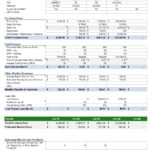NASCAR 15 might be a few years old, but it still offers a thrilling racing experience. However, navigating the game’s mechanics and mastering car tuning can be challenging, especially for those transitioning from simulators like NR2003. This guide addresses common questions about NASCAR 15, focusing on car setup, race starts, in-game gauges, pit stops, and understanding those mysterious dashboard lights.
Getting Started with NASCAR 15 Car Tuning
Many players begin their NASCAR 15 journey with default setups, which provide a decent starting point. However, as you progress, understanding how to fine-tune your car for each track becomes crucial. While NASCAR 15’s tuning options might not be as in-depth as some dedicated simulation platforms, adjusting elements like tire pressure, gearing, and downforce can significantly impact performance. Experimenting with these settings during practice sessions and analyzing lap times will help you identify optimal configurations for different racing conditions.
Mastering the Race Start and Drafting
Launching off the grid effectively is crucial in NASCAR racing. Many players struggle to maintain the initial draft in NASCAR 15, often losing ground in the opening seconds. While manual shifting and starting in first gear are recommended, the rapid acceleration of the AI can be difficult to match. Experiment with different throttle inputs and clutch control to minimize wheelspin and maximize acceleration. Additionally, pay close attention to the starting lights and the surrounding cars to anticipate the launch.
Deciphering the Dashboard and Gauges
One common frustration in NASCAR 15 is the lack of clear information from in-game gauges. The tachometer functions correctly, but other vital data, like engine temperature, is absent. Unfortunately, there’s no reliable way to monitor engine temperature in the game. Focus on consistent driving and avoid prolonged periods of high RPM to minimize the risk of overheating. The red light on the dashboard, often mistaken for a temperature warning, remains a mystery. It’s always illuminated and doesn’t appear to indicate any specific issue.
Pit Stop Strategies and Repairs
Pit stops in NASCAR 15 are streamlined, focusing on fuel and tire changes. The highlighted “55” indicates the pit road speed limit, but determining your exact speed can be tricky without a clear speedometer. Focus on maintaining a consistent pace and avoiding penalties. The game automatically handles damage repair during pit stops, though the extent of repairs isn’t explicitly displayed.
Embracing the NASCAR 15 Experience
NASCAR 15 offers a more forgiving experience compared to hardcore simulations. While you can push the limits without severe consequences, focusing on clean racing and strategic driving will lead to greater success. Experiment with car setups, practice race starts, and familiarize yourself with the game’s limitations to maximize your enjoyment. Don’t be afraid to explore online forums and communities for tuning tips and insights from experienced players.
Conclusion
Mastering NASCAR 15 involves understanding its unique mechanics and adapting to its limitations. While the game lacks some features found in more realistic simulations, it still provides an enjoyable and accessible NASCAR experience. By focusing on car tuning, race starts, pit strategies, and understanding the game’s nuances, you can significantly improve your performance on the track and climb the ranks.


